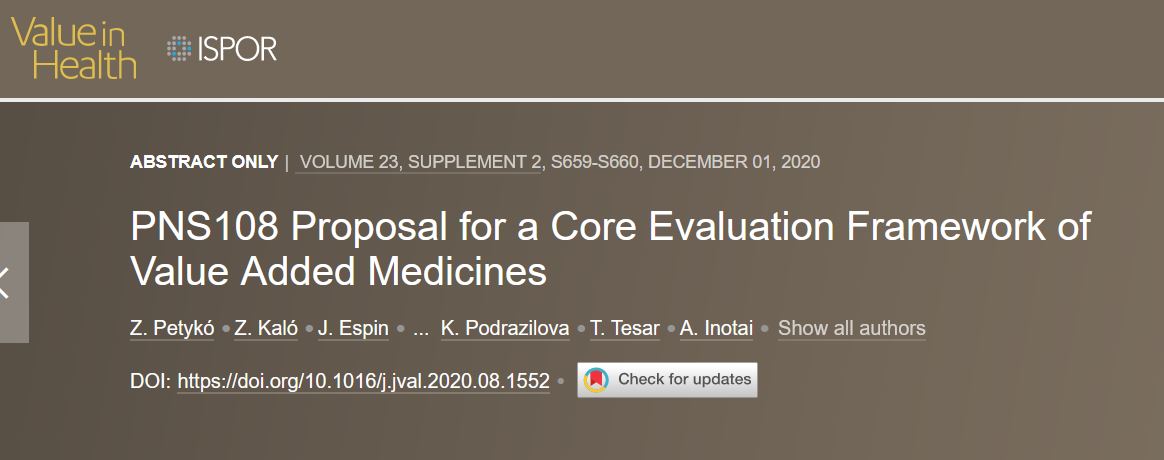
Objectives
Through incremental innovation by repositioning, reformulating and combining of off-patent pharmaceuticals, value added medicines (VAMs) offer potential benefits at affordable R&D costs. Current evaluation frameworks are primarily designed for de novo pharmaceuticals, consequently the mismatch between evidence requirements by public decision-makers and the evidence generated by manufacturers prevents exploiting the full societal benefits of VAMs. Our objective was to develop a VAM specific core evaluation framework, which can be a starting point for national adaptations.
Methods
Value domains were identified by a systematic literature review facilitated by iterative focus-group discussions. The draft evaluation framework (including the structure, definition and terminology of the core domains) was validated by health policy experts from 9 EU countries in consecutive virtual workshops.
Results
The PubMed search identified 1349 abstracts. 158 references were selected for data extraction. Initially, 18 value domains were developed from the extracted value propositions and checked for overlaps and feasibility of implementation. The core evaluation framework consists of 11 value domains: extending treatment options in new indication with unmet medical need; individual needs/special needs of patient (sub)population; efficacy/effectiveness; patient safety and tolerability; patient experience related to the therapy; adherence and persistence; quality of life; patient’s economic burden; economic and health burden on informal caregivers; health care resource utilization, costs or efficiency; technological improvement with logistical considerations.
Conclusions
The core evaluation framework captures healthcare and societal benefits of VAMs and can be used in various decision-making contexts, including deliberative decision-making, augmented cost-effectiveness frameworks and multi-criteria decision analysis (MCDAs). Publication of the evaluation framework may provide guidance on evidence requirements to manufacturers of VAMs and may reduce the heterogeneity of decision-making across European countries.


